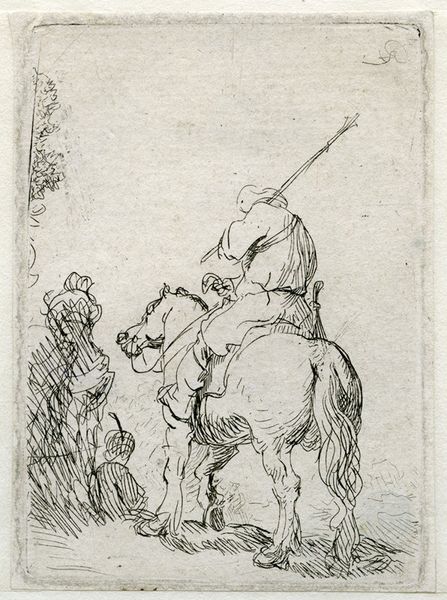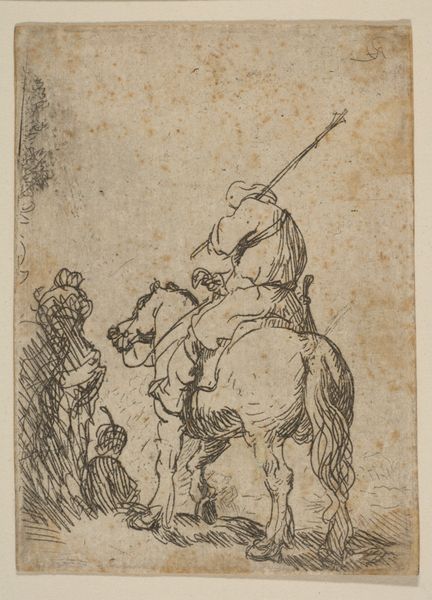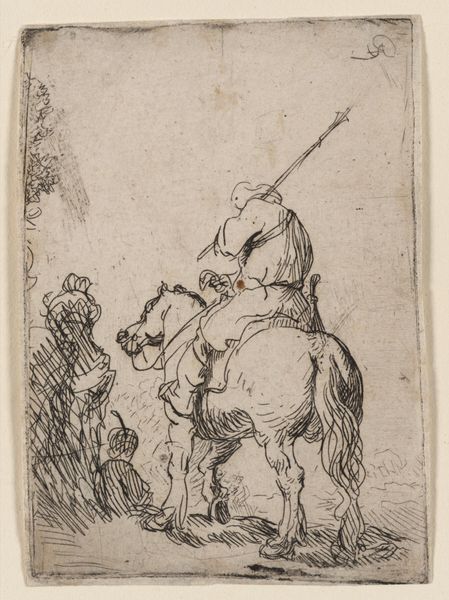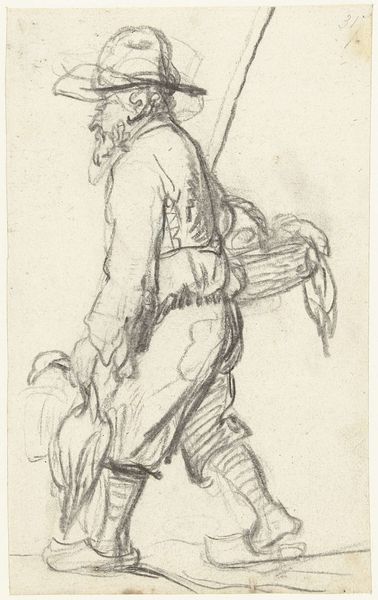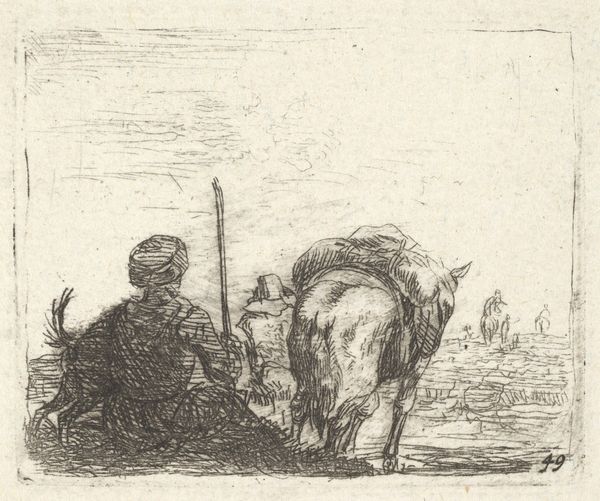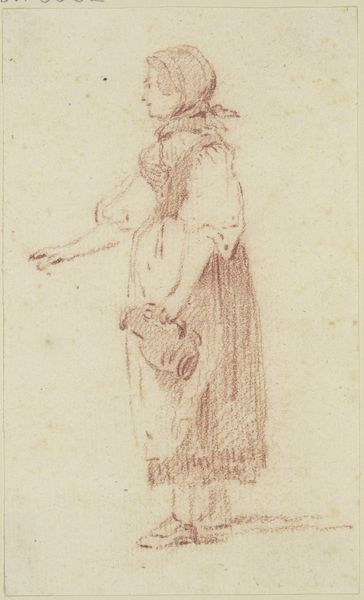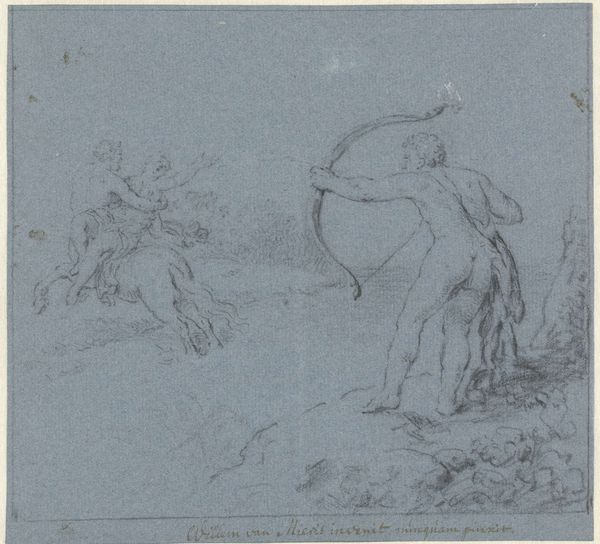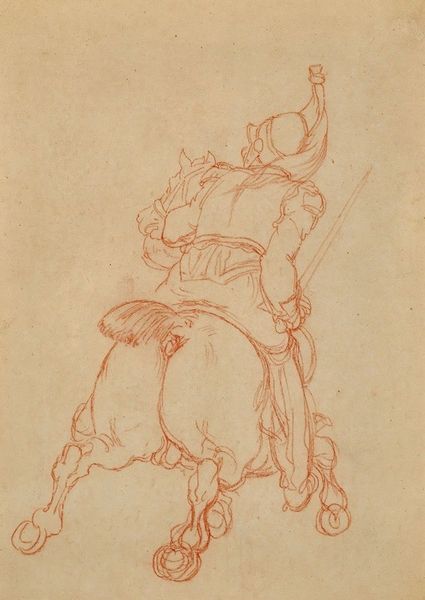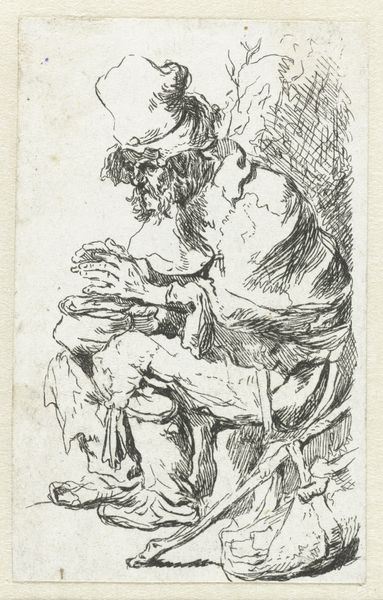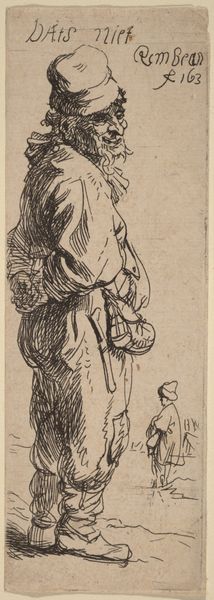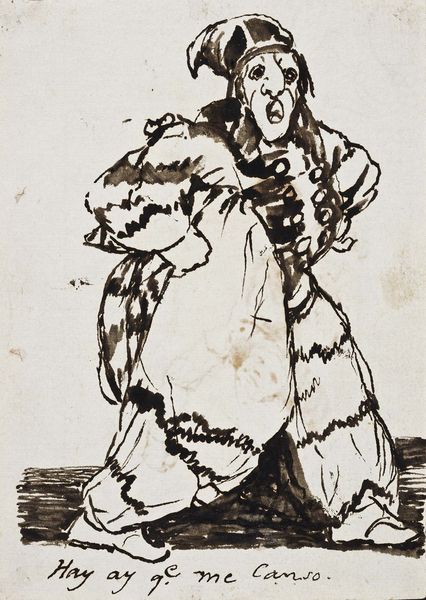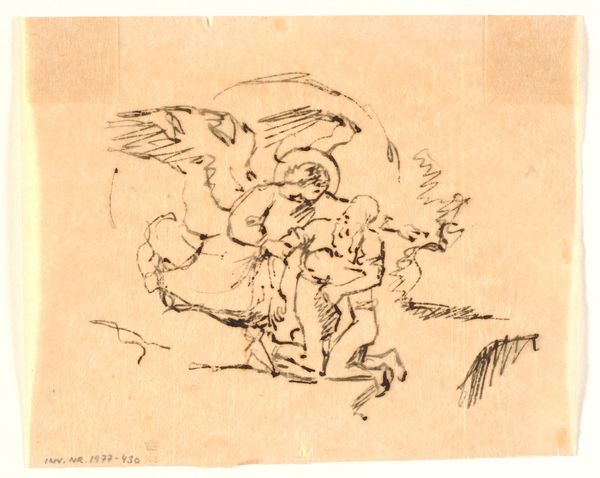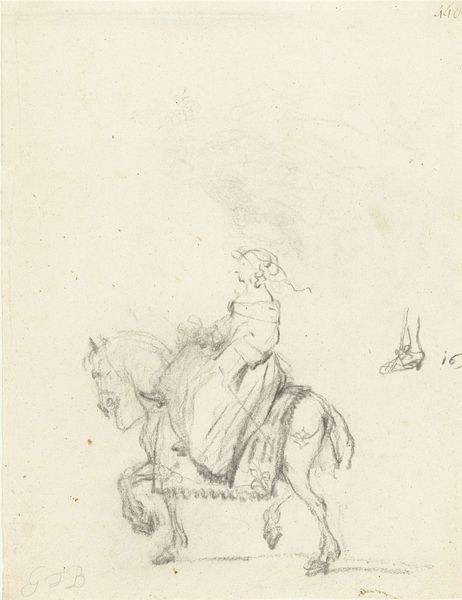
drawing, ink, pen
#
drawing
#
ink drawing
#
baroque
#
pen sketch
#
figuration
#
ink
#
pen
#
genre-painting
#
history-painting
Dimensions: height 81 mm, width 58 mm
Copyright: Rijks Museum: Open Domain
Editor: So this ink drawing, "Turbaned Soldier on Horseback," was created by Rembrandt van Rijn around 1629 and it’s currently held at the Rijksmuseum. I’m struck by how spontaneous it feels, like a quick sketch capturing a fleeting moment. What’s your interpretation? Curator: That immediacy is key. It’s tempting to see this as *just* a historical genre scene. But Rembrandt was keenly aware of how costume and pose could signify power, and more broadly about representation and ‘othering’. Editor: Othering? Curator: Consider the “turbaned soldier.” The exoticizing of the ‘Orient’ was a common trope, particularly in the context of colonial narratives. What power dynamics do you see at play? Does this image subtly endorse those narratives, or does it complicate them? Editor: I see what you mean. The rapid strokes could suggest either a studied exoticism or maybe even a critique, like he's hastily showing the stereotypes to unveil them. Curator: Precisely! Think about Rembrandt's other works – how he engaged with marginalized figures. It forces us to question the easy narratives. And what about the seemingly subservient figure near the horse? Editor: Ah, that little figure, almost hidden. Perhaps a commentary on class and servitude too? Curator: Yes. These are all layered issues. The pen and ink become tools to expose and examine social inequalities of the era. Looking through this lens makes me see beyond a quick genre scene. How about you? Editor: Absolutely. I won’t look at these historical depictions the same way. I’ll be asking myself: Whose perspective is this representing and what cultural narratives are being reinforced? Thanks!
Comments
No comments
Be the first to comment and join the conversation on the ultimate creative platform.
